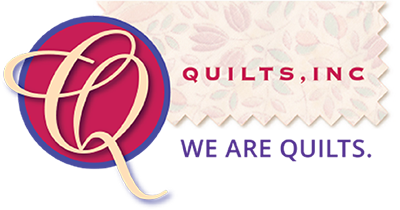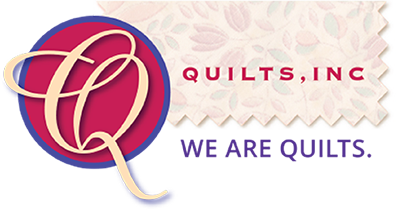Note: This continuing series reposts some of the most memorable columns of Suzy’s Fancy, which ran from 2009-2020. This piece originally ran in 2010.
Quilts are great communicators. Their messages can be subtle or overt. From them, one might infer their makers’ social status, economic condition, and even their religious beliefs or political leanings.
Quilts’ colors, fabrics, patterns, and textures can reveal much about their makers’ era, culture, and values; they can express nuances of feeling and meaning. Most of the time, however, this communication is non-verbal.
Not always, though. At the 2009 International Quilt Festival in Houston, one of the featured exhibits was title “Text on Textiles: Words as Design in Antique Quilts.” It marked the first of a three-part series showcasing quilts in which words and fabric come together to form a unique statement.
The 2009 exhibit was curated by Laura Fisher, owner of the New York City gallery, Fisher Heritage (formerly Laura Fisher/Antique Quilts & Americana), which has one of the largest collections of antique quilts for sale in the United States.
Laura, a world-renowned expert on Americana, decorative and utilitarian textiles, and folk art, has written several books about quilts. She also lectures, curates, and contributes to exhibitions, and has been a frequent guest on the Martha Stewart Living television program.
“I’ve always been interested in putting together exhibits that make people look at familiar things in different ways. Thematic groupings, such as quilts with text, are a great way to do that,” Fisher says. “I do the same thing when I’m helping someone build a collection. When I’m working with collectors, my goal is to help them find a focus so that they will end up with a group of objects that is cohesive and interesting. I want them to have collections, not accumulations.”
Laura drew from her own collection—and those of others she knew—to put together a fascinating group of quilts for the “Text on Textiles” exhibit. Her accompanying captions were entertaining and enlightening.
For example, the exhibit included a circa 1910 “backwards” alphabet quilt in bold, block letters that run vertically from top to bottom and read from right to left, with the letter “A” in the upper right corner. The letters P and G are backwards, and the letters V and L are upside down. Laura described it as one of the three mysterious, nonconformist alphabet quilts she has been fortunate to own.

From the first “Text on Textiles” exhibit.
“Was the quiltmaker dyslexic? Was the maker from an ethnic culture in which the alphabet reads from right to left, rather than English, which reads from left to right? Was the maker uneducated, illiterate, or daydreaming when putting it together?,” Fisher asks. “To my thinking, this topsy-turvy version must have been intentional rather than accidental, because of the time that was invested to produce this delightful, quizzical, and rare example.”
Probably the majority of text quilts—not just in Laura’s exhibit, but in general—feature some variation of a collection of signatures, intended either as an individual’s keepsake or as a communal fundraiser.
For example, there are friendship quilts (those showing names of the people who made the individual blocks that would be joined as a quilt for the lucky recipient); subscription quilts (a type of fundraising quilt in which individuals, businesses, and/or organizations paid a certain amount to have their names included on the quilt); tithing, or revenue, quilts (another type of fundraising quilt featuring the names of members of a church, sometimes even recording the amount of money promised for a church-related project); and celebrity autograph quilts (those in which famous people have been solicited to sign their names on a quilt block).

From the first “Text on Textiles” exhibit.
“In older quilts, most signatures were done free-hand, but some were applied using brass stencils,” Fisher notes. “Inks were primarily used for signing in the 19th century, but later it was common to embroider on top of written signatures in order to preserve them.”
There were a variety of ways that peoples’ names might be applied to a quilt. Sometimes, each individual signed his or her own name, but probably more often, for clarity’s sake, perhaps, just one person would inscribe every name on the quilt. Sometimes people wrote in cursive, sometimes they printed, and sometimes they used block lettering.
Other types of text examples include sentiment quilts, such as those with Bible verses, poems, inspirational sayings, wedding wishes, and personal messages. Pieced blocks, quilts with appliqué, or even crazy quilts were a common foundation for sentiment-type text quilts.

From the first “Text on Textiles” exhibit.
Another group of text quilts in Fisher’s exhibition could be referred to as instructional quilts. They feature, for example, maps listing the names of countries or states, months of the year, or the twelve signs of the zodiac—the latter being a 1930s’ quilt marketed to quilters as a published pattern.
So regardless of style, quilts with text get their message across. Fisher is hoping to publish a book on text quilts, and I hope she does, because if the quilts in her exhibit are any indication, they have a lot to tell us.



